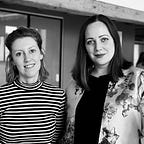Meet Paula Petcu: Humanoid Robot Builder
Paula Petcu borrowed an Arduino starter kit from a friend 5 years ago and today has built an anatomically based humanoid robot with functional tendons, joints, a heart and soon, a brain. Paula’s background is in Computer Science and her full time job is in digital health. Her weekends are spent building her robot, pouring over anatomy books and code libraries and spending time learning how to make what she needs for the robot, such as 3d printed parts, motor controlled steel wires for tendons, or most recently, a foray into how the voice of the robot should sound.
After building things with Arduino, Paula used her background with software and found that it was relatively easy to automate things and work with the IoT. She found an application which allowed her to try out her new skills, namely, retrofitting her fridge with temperature sensors, cameras, and weight sensors to transform it into a smart fridge. She became more interested in motors and mechanics and her next project was an internet controlled cocktail machine that can mix up to 8 different ingredients.
7 Questions with Paula Petcu:
- What are you curious about in technology right now?
I’m working on different aspects of the robot at the moment — the robot brain where I’ve 3D printed a skull have included all the electronics i the “brain” but have yet to make it “intelligent”. That is a very interesting area, of how I can use data from sensors and apply AI technologies for the robot to make sense of the world. And the hardest part is yet to come, the legs. It’s not easy to get a humanoid robot to balance on two legs.
2. Why or how did you choose this path?
I want to learn and create, seeking new challenges, for example creating something that will move on its own accord. At the same time, I was fascinated by the human body, there is simply so much we have to discover. So it was also a project where I was trying to imitate how the human body functions, and in this way, I’ve come to understand the human body better.
3. What has been your biggest failure in the past year, and what did you learn from that?
The first version of the robot arm! On the first version, I focused too much on the design and used cheap servo motors — I didn’t know any better. I used a long time studying and trying to imitate the human body, but didn’t use enough time on structure and mechanics. I designed from anatomy and not from the technical possibilities and limitations. The arm was too heavy and couldn’t move. In version 2, I started from a completely different angle, planning the movement and mechanics first, and thinking of design as complementary.
4. What is your biggest daily challenge working with technology in this field?
Finding enough time to work on it! I work on the weekends and I love a technical challenge. I’m excited to do this research and I don’t see it as a challenge but rather as a process that I do, together in a community of others building humanoid robots. I work on building the robot by myself, but am always inspired by what others are building in the world.
5. How do you see concretely, the next 5 years and this new decade in tech?
Since I work with robots, I can see how this can be an opportunity to enhance our human bodies, with prosthetics or augmentation. On a longer horizon, I’m curious about how humanoid robots and automisation will affect our activities in our home and and support the elderly population. Perhaps they will be companion robots for those who are lonely. Our human ability to emotionally connect with objects can actually be an advantage here.
6. What has been your favourite project to date and why?
Can I say the robot again? The first thing I built was something with a DC motor, which was great, to get something to move. And I’m still so excited to be working with robots, even now when I’m speaking with you about it. I didn’t expect to be engaged in a project like this for so long, but it’s been exciting through and through, and has helped me to broaden my understanding of other areas such as anatomy, mechanics, and human emotion.
7. What do you think is something we should be paying attention to?
We live in an amazing time where we have access to so much information. I document and share my projects. (Petcu is a part of the world wide open source community and is dedicated to documenting and sharing what she learns while making. Find her on Github, here). Everything I do is a learning process, and I can only build what I do today because of the knowledge others before me have shared. I hope that more people will do this. However, with this, it requires also that people are more aware of how and what is being shared. Especially when it comes to communication of information, we need to improve our data literacy skills. Everyone should be comfortable asking “why”?
Paula’s work can be seen at:
- Website / YouTube channel: http://paulaslab.com
- Instagram: https://www.instagram.com/paulaslab/
- GitHub: https://github.com/petcupaula?tab=repositories
- Pinterest robots inspiration board: https://www.pinterest.dk/paulapetcu/cute-robots/
Greater Spaces is written by Majken Overgaard and Vanessa Julia Carpenter where we work to expand the narrative of what technology is and who creates it. We speak with Danish and international female role models within technology and between these interviews we share what is most interesting to us, with a focus on diversity.
